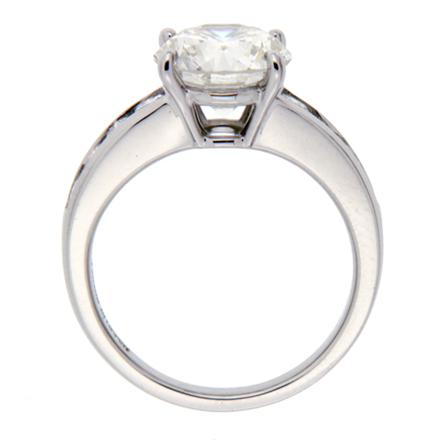What causes a ring to transcend its ordinariness and come out greater than the sum of its parts? Also, what causes a big sparkler to look so mediocre? The answer you are looking for is probably in the setting. The setting is the main event of a ring. The diamond may be the focal point of a solitaire ring, but the setting is what puts it in place. A good setting can glam up a small stone beyond recognition, whereas a poor setting can eat away the luster of a good grade stone to the point of being unnoticeable. Let’s take a look at the different styles of center stone settings that are used in rings.
Peg Head: A peg head setting features four prongs and a gently elevated peg-like bottom that gives the gems a gentle lift.
Basket: The most popular style of center stone setting, this one features the classic four prong structure with a basket like holding at the bottom.
Decorative: This is your multi-prong setting that you so love for its decorative quality. It owes that quality to its two features, a definitely conical bottom and 8 prongs that make it fitting for a large size round-cut diamond.
Double-Prong: Double-prong setting is essentially the same as basket setting, with the exception of the number of prongs. It has 8 prongs that appear in twos in the four corners of the gem.
Double-Claw: The double-claw setting is nearly identical to the double-prong style, except that it uses claws instead of prongs for a tighter holding.
V-Prong: The V prong gives the setting a quality of depth with its solid brackets that are slit in between to create V shaped incisions, thus giving it the name.
Bezel: A bezel is a full-metal, round setting that serves as the seat of the stone. Square and rectangular bezels are now often sighted in rings.
Part Bezel: Part bezel is the setting in which the solid bezel bracket is interrupted with intently created gaps revealing the sides of the stones.
Channel: Channel, also called the bar setting is where a channel-like gap holds the stone inside it, in a gentle depression.
Trellis: Trellis is a vintage setting style where a four-prong structure with a hollow bottom upholds the stones.
Bridge Accent: Often seen in very elaborate pieces, this setting has accenting on the bridges on either sides.
Bright Cut: Between demure and dramatic, the bright cut is an antique setting where the stone is set in a boxy contour with four prong heads holding it down.






